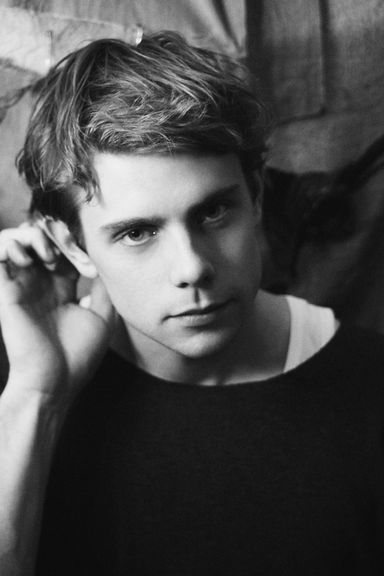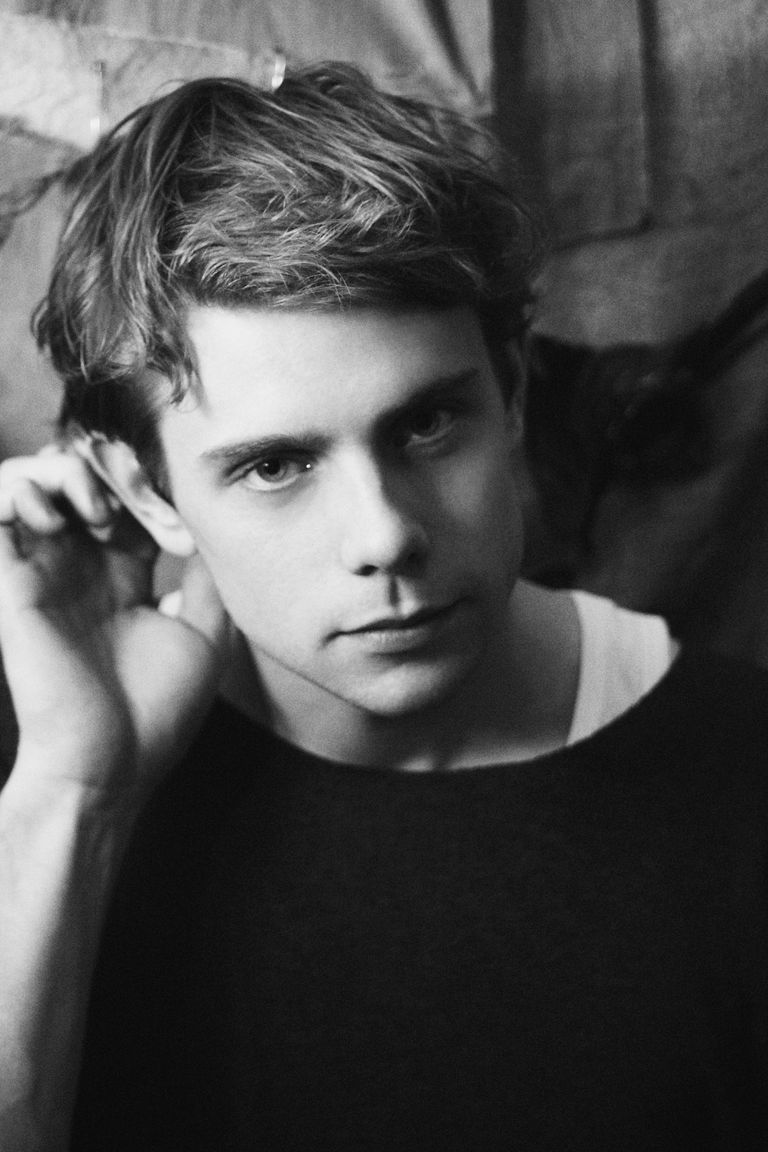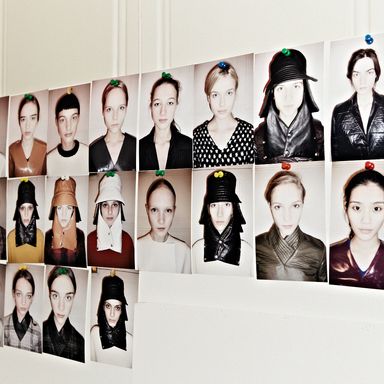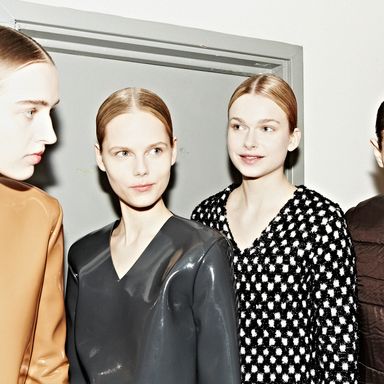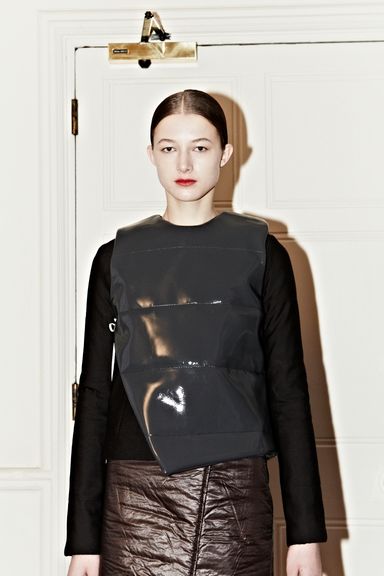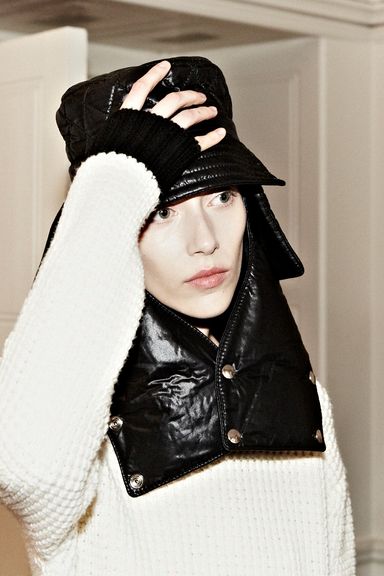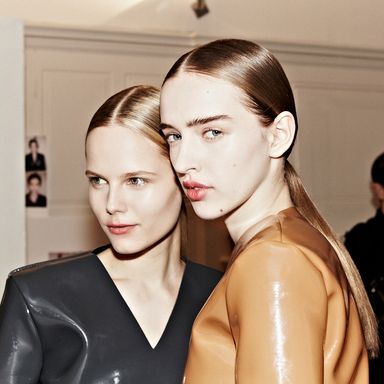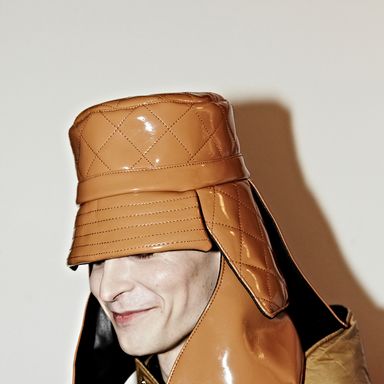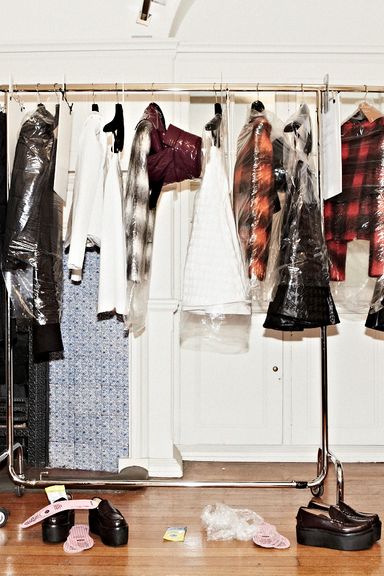J.W. Anderson: ‘Now Is the Hardest Point I’ve Ever Had’
Curious about aesthetic growing up in Northern Ireland, thanks, in part, to his grandmothers (one a seamstress and one who mixed pinafores and sportswear), Jonathan William Anderson enrolled in design school — but not before a stint studying acting. “I think that’s been so valuable,” he recently told The Cut. “Acting is about portraying something … that dedication or learning the script of it is really important in really getting to know a topic.” He signed up for menswear courses at the London College of Fashion, window-dressing for Prada on the side and working under stylist Manuela Pavesi. “I find her extremely compelling as a woman,” Anderson remarked. “Just the genius of someone who can see things, like proportionately wrongs and rights, and trying to build it all up on a mannequin is difficult — to actually bring it to life — and she’s the best in the world at it.” Upon graduating, Anderson started showing at London Fashion Week in September 2007, adding womenswear to his lineup last year. Now, the 27-year-old, who doubles as the creative director for basics brand Sunspel, is collaborating with Topshop on two collections (the first will be in stores next month), while presumably mulling over his forthcoming show. Read ahead for details on his creative process, why he thinks we’re trapped by buyers, and what it’s like to be on the tip of the industry’s tongue.
Tell me about your design process. Do you first come up with a theme?
I don’t think we ever go with a set theme … I work quite closely with Benjamin Bruno, who’s a stylist, and we collaborate through the whole process, from building the architecture, deconstructing the previous season’s architecture into a new architecture, researching, and developing. I think it’s about a dialogue — you need a dialogue within this business to keep going. All of the collections are an evolving dialogue until the last moment, and that’s when your concept is physical … and it has to be able to evolve after the show ends, as well. It can’t just make sense in that moment — it has to make sense later on … And the garment has to have an element of surprise when it hits the rack, and it has to have an element of surprise within the show. It cannot just make sense instantly, which I think is extremely important.
What is the difference between designing for men and for women?
I think the principle is exactly the same. For me, menswear is an experimental ground to play with something. There is scope to be gained there — you can create a new normality. With women, we like a kind of homogenous wardrobe … But I equally like both. I wouldn’t say either one is harder than the other. It depends on what you want to gain from it. If you wanted to try to push men’s and make it kind of look sharp and commercially expensive and add a new architecture … it’s always difficult, but both have their challenges.
Because you design for men and women, how do you keep up with the show schedule?
A lot of coffee and a lot of cigarettes. [Laughs.] Continual, continual work. Building up a collection each couple of months is, and to push new things all the time, is an extreme commitment. To even come up with singular new ideas, it’s a marathon … I enjoy every moment of it, but I think that you have to take a lot of it with a pinch of salt and keep believing in your aesthetic until the greater population accepts it into the fold … Sometimes I read my reviews, and to an extent I think you have to … obviously it’s something that’s extremely subjective. And I think it’s very easy to get trapped — listening to too much advice can be a problem because you deflect off the road that you’re on, and that road might be exactly right.
How important to you are fashion shows?
I think fashion shows are a full stop. You need a point where there’s no return, and fashion shows create a That’s it, that’s the finishing line. Shows give you a global vision. They give you the music, the models, the environment, the sound, the smell, the whole trip of it, and it’s extremely important — it’s an expensive way of doing it — but it’s a really good way for people to see the full formation … the full architecture, the full shape, the full face, shoe, bag, everything. You’ve got to be able to sell that look, and there has to be a deadline for it.
In that vein, what do you think about the evolution of London Fashion Week?
It’s becoming stronger and stronger each time. It’s growing out of the idea of something having to “look” like it’s from London … and [there’s now] the idea that it can start to semi-compete with the outside. But my biggest thing at the moment is, until buying trends change, this industry is trapped in a weird way, no matter what — being in London or being in New York. I think until the buyer, over the press, changes its perception, we’re stuck in a cycle of jeans and T-shirts and cocktail dresses … If designers are willing to take risks, I think buyers should take risks, as well with press taking risks. Psyches have to change, and hopefully that’s what’s happening with London, and with the rest of the world, really.
Tell me a little bit about your collaboration with Topshop.
Well, it gives you that opportunity to reach another audience, a younger audience, which is extremely important. I never wanted my brand to be elitist, so that’s why having something like collaborations opens that up. I wanted a product that could relate to anyone — that was accessible on all levels — and that you could take a piece away and have the same kind of stimulant that you would get from a full show look. It was condensing that down into something was sort of affordable, manageable, and understandable to a mass.
The collection also includes objects. Where did that come from?
I like the idea of being able to do posters and pencils and Rubik’s Cubes and applying the same approach that clothing has, but to a product — something that you could easily pick up and it’s a dollar or $2.99. It’s quite exciting to see different objects laid out on a table or books interacting with a jumper or a jumper interacting with a Rubik’s Cube — how things can be merchandised and visually stimulating. In total, the collection is about 90 pieces. It’s one of the largest collaborations they’ve done to date.
That brings us to a larger point … the fashion community has really embraced you lately. Do you feel a lot of pressure?
Yeah, I think now is the hardest point I’ve ever had. [Laughs.] And it’s very mentally draining trying to please powers A, B, C, D, and E. Making a brand is extremely difficult. I don’t go out to be a young designer — I go out to build a brand like every designer … when you’re a tiny company without a huge infrastructure, it’s the support mechanism around you that is the most vital. I think, in the nineties, there was a support for the dream, and there was an infrastructure to take risks … People had an excitement about fashion. Now, it’s very easy for people to succumb to a sartorial menswear buy and not a contemporary menswear buy. It’s very easy to sell the [plain] T-shirt rather than a contemporary shirt, because it’s a lot harder to take risks in this financial climate, which is a nightmare. But … we have fewer overheads than a huge house has. That’s one of the advantages.
Since you talk openly about money, how is your business doing?
We’re growing at a very steady rate, as much as the economy will let us. There is a capping point, being completely self-funded by myself — you do the accounts, and you’re doing this line, and you’re running human resources and everything. There is only so much you can do in a day. I think we’re getting to a point, doing men’s, women’s, and pre-collections, that we are showing a stamina … I’m willing to live on bread and cheese just because I wake up in the morning. I think you have to decide: Are you doing this to be stimulated in the morning, or are you doing this to be owned by something? I choose to be stimulated. And, yes, it’s difficult, and, yes, you hit hard times, but if it was really easy then we would have even more designers than we have today. And I’m extremely open about every aspect of what we do. I think the industry has to be more transparent.
How close are you to opening your own store?
Oh, we’re years off. Years, years, years off. One day, hopefully. It would be nice to be able to commit to a full look on a rack. I think that’s every designer’s goal. You want to be able to see it as you see it, not diluted through the eyes of something else.
So, what do you wear on a daily basis?
Not much, really — jeans and a jumper. I think that it’s like, if you are cooking food for someone, it’s very hard to eat it. Same principle applies.
